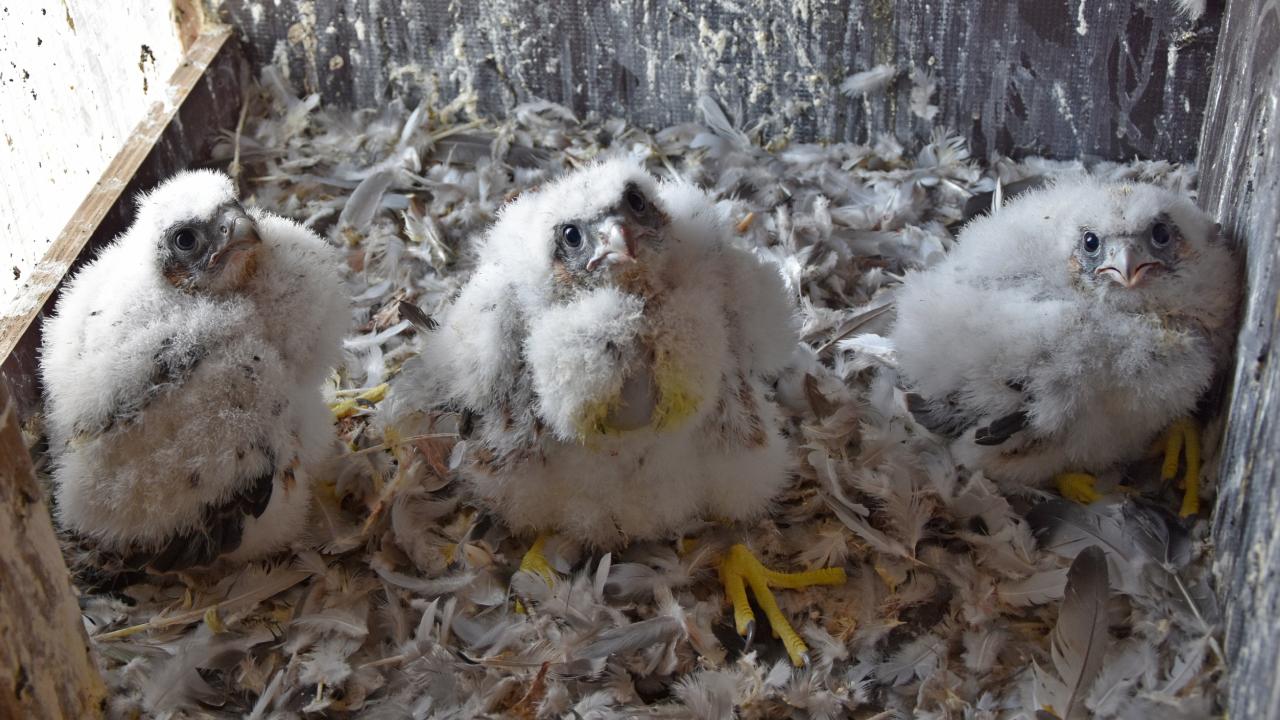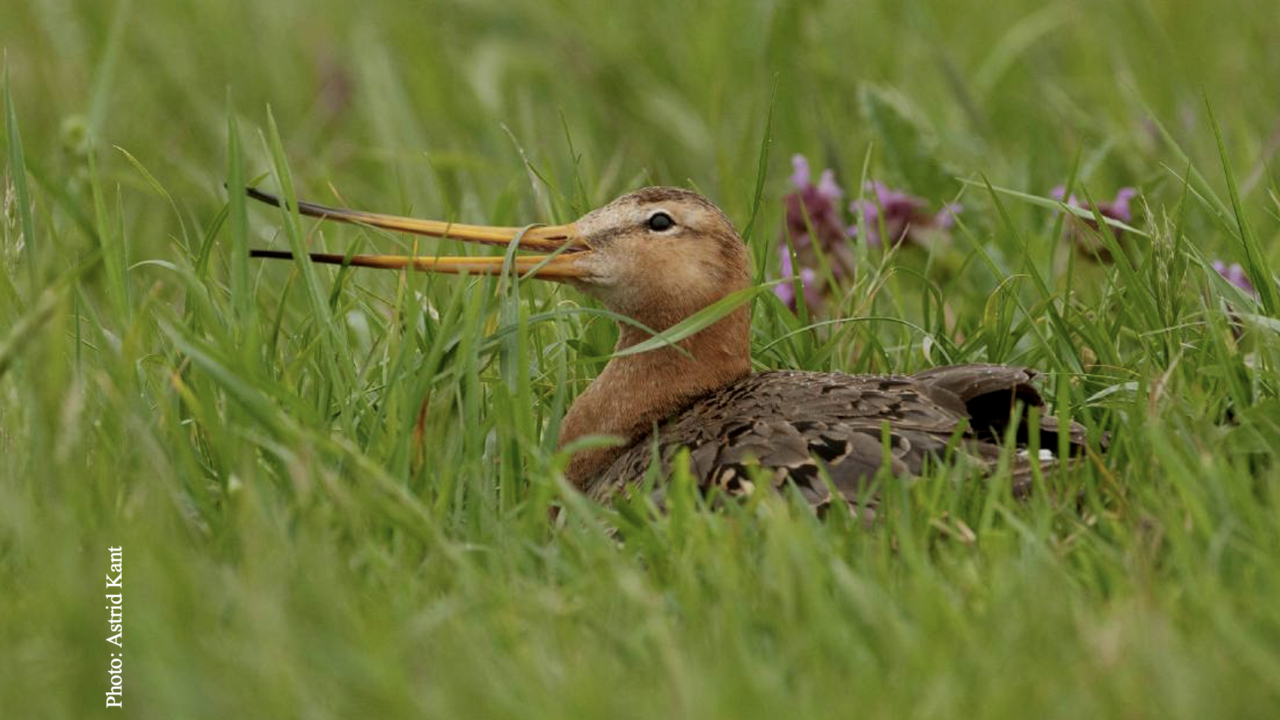I am an ecotoxicologist, interested in contaminants in the environment, in particular in wild animals, and the implications for wildlife and human health. I have a degree in pharmacy and a PhD in food and environmental toxicology. Following two Marie Curie Fellowships, I have worked mostly on raptors and other apex predators (e.g. otters, marine mammals) as sentinels of environmental contamination in European projects as well in The Netherlands. I use archive and contemporary samples in my research, favouring non-invasive methods in working with these protected species. I collaborate with a large network of over 100 natural science collections, environmental specimen banks, biologists and analytical laboratories in over 30 countries across Europe and internationally.
Keywords
Ecotoxicology, legacy contaminants, contaminants of emerging concern, raptors, apex predators, food chain, wide-scope target analysis, non-target screening, High-Resolution Mass Spectrometry (HRMS)
Researchinterest
I am interested in exposure of wildlife to legacy and emerging contaminants in the environment, and the application of this knowledge to improve chemicals management in Europe.
In recent years, my research has largely been in the context of pan-European collaborations on contaminants in top predators, including raptors, marine mammals and otters, with a view to improving chemicals risk assessment and thereby reducing risks to wildlife and humans. I was previously involved in running the European Networking Programme EURAPMON (2010-15) and the LIFE APEX project (2018-22) which worked to demonstrate novel regulatory applications of chemical monitoring data from apex predators and prey. I also led a pan-European Working Group on Collections for the COST Action European Raptor Biomonitoring Facility (2018-22). I am currently working on a major new Horizon Europe project 'TerraChem' on contaminants in terrestrial food chains - I focus on routes of exposure to chemicals in wildlife and extent of trophic transfer. Ongoing research also includes long-term monitoring of emerging contaminants in peregrines and in the black-tailed godwit, the national bird, in The Netherlands
Currenttopics
A selection of the topics I am working on currently/recently:
- Horizon Europe project "From soils to apex species: chemical pathways, effects and impact on terrestrial biodiversity and ecosystem services and applications for better chemicals management', also known as TerraChem. Lead for Work Package 1: Monitoring chemicals exposure and mixture effects in terrestrial food chains in Europe.
Read more about TerraChem - demonstration of use of contaminant monitoring data in raptors to assess effectiveness of chemical risk management measures, and revealing presence of chemical contaminants in apex predators (raptors, otters, marine mammals) and their prey through targeted and non-target screening analyses (using novel and complementary high resolution mass spectrometry techniques) through the LIFE APEX project
- bringing together collections in Europe for development of a distributed European Raptor Specimen Bank as Working Group Lead for Collections within the European Raptor Biomonitoring Facility COST Action in support of better chemicals management
- proof of concept for pan-European contaminant monitoring in raptors under the European Raptor Biomonitoring Facility
- long-term contaminant monitoring of the Dutch peregrine population '(sampling since 2014) using state of the art methods
- monitoring of contaminants in the Dutch population of black-tailed godwit

TerraChem: understanding chemicals in terrestrial wildlife
Keypublications
- Ozaki, S., Movalli, P., Cincinelli, A., Alygizakis, N., Badry, A., Carter, H., ... & Walker, L. (2024). Significant turning point: common buzzard (Buteo buteo) exposure to second-generation anticoagulant rodenticides in the United Kingdom. Environmental Science & Technology, 58(14), 6093-6104.
- Alygizakis, N.,... Movalli, P. …& Slobodnik, J. (2024). Network analysis to reveal the most commonly detected compounds in predator-prey pairs in freshwater and marine mammals and fish in Europe. Science of the Total Environment, 950, 175303.
- Movalli, P., Biesmeijer, K., Gkotsis, G., Alygizakis, N., Nika, M. C., Vasilatos, K., ... & Piersma, T. (2023). High resolution mass spectrometric suspect screening, wide-scope target analysis of emerging contaminants and determination of legacy pollutants in adult black-tailed godwit Limosa limosa limosa in the Netherlands – A pilot study. Chemosphere 321, 138145.
- Ozaki, S., Movalli, P., Cincinelli, A., Alygizakis, N., Badry, A., Chaplow, J. S., ... & Walker, L. (2023). The importance of in-year seasonal fluctuations for biomonitoring of apex predators: A case study of 14 essential and non-essential elements in the liver of the common buzzard (Buteo buteo) in the United Kingdom. Environmental Pollution 323, 121308.
- Ramello, G., Duke, G., Dekker, R., van der Mije, S. & Movalli, P. (2022) A novel survey of raptor collections in Europe and their potential to provide samples for pan-European contaminant monitoring. Environmental Science and Pollution Research 29(12), 17017-17030.
- Movalli, P., Koschorreck, J., Treu, G., Slobodnik, J., Alygizakis, N., Androulakakis, A., Badry, A., Baltag, E., Barbagli, F., Bauer, K., Biesmeijer, K…. Dekker,R.,... Koureas, D. et al. (2022). The role of natural science collections in the biomonitoring of environmental contaminants in apex predators in support of the EU’s zero pollution ambition. Environmental Sciences Europe, 34(1), pp.1-7.
- Movalli, P., Duke, G., Ramello, G., Dekker, R., Vrezec, A., Shore, R. F., ... & Badry, A. (2019). Progress on bringing together raptor collections in Europe for contaminant research and monitoring in relation to chemicals regulation. Environmental Science and Pollution Research, 1-5.
- Movalli, P., Bode, P., Dekker, R., Fornasari, L. van der Mije, S. & Yosef, R. (2017) Retrospective biomonitoring of mercury and other elements in museum feathers of common kestrel Falco tinnunculus using instrumental neutron activation analysis (INAA). Environ Sci Pollut Res. DOI 10.1007/s11356-017-0157-1
For a full list of publications see ResearchGate
PhDsupervision
Supervision of Postdoc Tom Nolte on the TerraChem project (March 2024 - ongoing).
Supervision of four short-term scientific missions (three postdocs, one masters level) within the COST Action "European Raptor Biomonitoring Facility" (2018-2022). These have involved early stage researchers travelling from one European country to another.
Topics have included a review of raptor collections in Europe, development of a European database on frozen raptor specimens, and addressing constraints to shipping of raptor samples, hosted by Naturalis, the Danish Museum of Natural History and University of Murcia.

Teachingactivities
- Supervision of ‘snuffelstagiaire’ Zoe Penterman (2025)
- Guest lecturer, Porto Natural History Museum / University of Porto, PhD Advanced course in museum techniques (2021, 2022, 2023)
- Convener and lead lecturer, EURAPMON Summer School on Monitoring for and with raptors (lectures and practicals involving international guest lecturers) Naturalis Biodiversity Center, for c.15 PhD students and postdoctoral researchers, 27-29 August 2014.
In themedia
Here is a link to a feature online in The Guardian (originally published in The Observer) on chemicals in birds of prey which refers to my work at Naturalis: 'How Birds of Prey are Exposing a Toxic Timebomb'- 29 September 2022
See here a film I produced and directed on Contaminant monitoring in raptors for better chemicals management in Europe - the role of natural science collections - February 2021
and another film produced in collaboration with the University of Murcia on Processing raptor carcasses for contaminant monitoring - a brief guide for natural science collections - February 2021
Observer feature on chemicals in birds of prey
Here is a link to an article in NatureToday on contaminants in the black-tailed godwit (grutto): "Dutch godwits have a 'toxin cocktail' in their liver" -08 April 2023 (in Dutch)
Here another article in Algemeen dagblad Rotterdam on ''Godwits are full of toxins: bad for chicks'' April 2023 (in Dutch)
